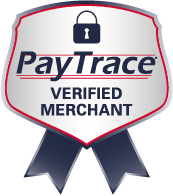Who knew?
As a hybrid marketing agency based in Denver, we have the advantage of seeing what is working for our clients across the country as well as here in Denver. One of the most intriguing insights we have seen recently is the rebound of direct mail especially when it is connected to inbound marketing.
If you’re a business owner who thinks direct mail marketing died in 2008, think again. A 2011 Channel Preference Study conducted by Epsilon Targeting reveals that despite bleak economic conditions, as well as the overall decline of print media and the rise of online (Inbound) marketing, direct mail still remains the consumer’s preferred channel for initial marketing messages from companies.
This may come as a surprise to many who feel that direct mail is about as old-school as it gets. And, don’t we inbound marketers tell you that offline print marketing is interruptive, anyway? How can it fit into today’s brave new inbound marketing world? As it turns out, actually very well!
How to Combine Traditional and Inbound Marketing for Better Returns
The truth is, direct mail marketing has been helping companies increase returns on their inbound marketing efforts. By keeping you connected to your customers, direct mail increases your prospects’ awareness of you and your company. And aside from the ability to embed QR codes, as well as the versatility of Variable Data customization of images and messages, direct mail provides one of those all-important “touches” that boost brand recognition and keeps you top of mind when it’s time to make a purchase.
According to The Direct Marketing Association, companies spent a little over $50 billion on direct mail in 2011—an increase of 4.6% over the previous year. And, direct mail expenditures are expected to rise at least 3.6% per year through 2014. So we encourage you to think about how you can help improve your marketing by incorporating direct mail marketing into your overall strategies.
How? Somewhat ironically, online and mobile technologies are helping direct mail make its resurgence, and you can use these same tools to get started. Postcard mailings, envelopes, brochures and forms can contain PURLS (Personal URLs) and QR (Quick Response) codes that link readers to your site, your webcasts and your product information. With these, customers can easily download your white papers, coupons or special offers—right from their mobile devices, right from your mailings.
First Contact
In this way, direct mail can become the initial form of engagement, the hook that directs interested, qualified leads to your site where they can be nurtured through the sales process using the all-important inbound marketing methods. Regularly scheduled mailings then will keep your prospects connected to you and give them a convenient way to make contact.
By bridging online and offline marketing worlds, these technologies supercharge your traditional direct mailing campaigns, and give your target market a way to take advantage of tools they already use every day—packaged in a familiar and time-honored form.
When combined with inbound marketing methods, direct mail marketing results become easier to measure and more agile to manage. This integration of inbound and outbound marketing offers your business a simple and effective way to reach those most likely to make a purchase. And, it can do so from anywhere, even while your customers are on the go.
Direct mail initiatives for your Denver business can make a lot of sense. A direct mail marketing service like DBC can pull it all together for you, and help you reach your goals using your customers’ favorite old-school mode of communication (with a little help from cutting-edge online marketing technology)!
Conclusions?
What do you think the impact of traditional techniques on more modern inbound marketing can have on your business? Does it make sense to try to use the best of both approaches? Is the benefit of traditional marketing worth the expense even when combined with inbound marketing’s advantages?



